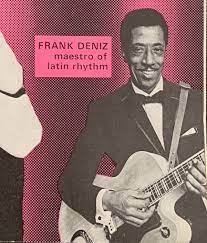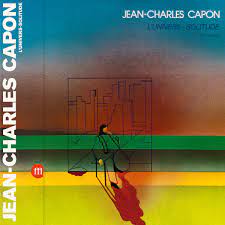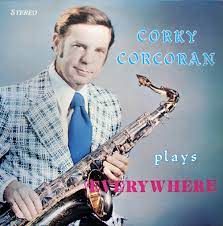
Daily Dose Of Jazz…
Frank Deniz was born Francisco Antonio Deniz on July 31, 1912 in Cardiff, Wales. His father, an African born in Cape Verde, was a seaman, and his mother was of English and African-American descent. They were amateur musicians, father playing violin and mother playing piano. From the age of 15 he joined his father on sea voyages. In 1931 his father was taken ill and the lad was forced to leave him in hospital in Odessa, Ukraine where he died. Between voyages he played music, inspired by jazz guitarists Teddy Bunn and Eddie Lang.
He married pianist Clara Wason in 1936 and they moved to London, England and found work as musicians in Soho. In 1937 they played for a time in the orchestra of Ken “Snakehips” Johnson. Deniz later played at Adelaide Hall’s Florida Club in Mayfair, where he played with pianist Fela Sowande.
Joining the Merchant Navy in 1940, he played music in between voyages with contemporaries Eric Winstone and Edmundo Ros, and formed his own band, the Spirits of Rhythm. In 1944 he was wounded when his ship was torpedoed on approaching Anzio.
Stanley Black, leader of the BBC Dance Orchestra employed him regularly and introduced him to others in the music business. Deniz joined Harry Parry’s Radio Rhythm Club Sextet, which had a regular radio series. In 1953 with his brothers, he formed the Hermanos Deniz Cuban Rhythm Band, which gave regular broadcasts in the 1950s regularly through to the 1970s.
Deniz composed music with his brother Laurence for the 1959 film Our Man in Havana. He accompanied Hoagy Carmichael on a tour of Britain. In his later years he played with the Hermanos Deniz band at the Talk of the Town. This continued for many years until his retirement in 1980, when they lived in Málaga Spain during the summer, until Clara contracted Parkinson’s disease in the 1990s. At this point Deniz became her caregiver until her death.
Guitarist Frank Deniz transitioned on July 17, 2005 at his home in Stanstead Abbotts, Hertfordshire, England.
More Posts: bandleader,guitar,history,instrumental,jazz,music

Requisites
Catalonian Nights, Vol. 1 ~ Tete Montoliu Trio | By Eddie Carter
The Tete Montoliu Trio enters the spotlight with a 1980 live trio date, Catalonian Nights, Vol. 1 (SteepleChase Records SCS-1148). It came out a year later and is the first of three releases by the group from the Zeleste Club. Tete was born blind in Barcelona and learned braille music at age seven. His father was a professional musician, and his mother loved jazz, inspiring him to learn the piano. Montoliu attended the Barcelona Conservatori Superior de Música del Liceu at age thirteen. Tete met a few jazz musicians and learned about jam sessions while studying at the music college. He’s joined here by John Heard on bass and Albert Tootie Heath on drums. My copy is the original U.S. Stereo album.
D & E is from the pen of Milt Jackson and gets the set underway with the trio’s medium melody. Everyone has a lengthy canvas to work on, and Tete lets his fingers do the talking on the lead interpretation. John follows, walking his bass as if on a Sunday stroll, then Albert converses with Tete ahead of the close. Montoliu showcases his swinging style on Lady Bird by Tadd Dameron next, beginning with a solo introduction that grows into the ensemble’s spirited melody. Tete’s opening solo is off to an adventurous start; then Heath joins the pianist for a vigorous exchange leading to the theme’s reprise and robust ending.
Autumn In New York by Vernon Duke begins with a beautiful piano introduction that blossoms into a gorgeous ensemble theme. Tete begins the opening statement quietly, then picks up the pace to improvise freely into a satisfying summation. John delivers the following solo with exquisite sensitivity, preceding the closing chorus and tender climax. Kenny Dorham’s Blue Bossa takes off with the trio’s bossa-nova melody. Montoliu makes his entrance with an intriguing interpretation that delivers the goods. Heard speaks his piece next, then Tete and Heath share the finale leading to the melody’s reprise and exit. The trio wraps everything up in short order with The Theme.
Freddy Hansson and Josep Maria Rodon recorded this live performance, and Nils Winther produced it. Catalonian Nights, Vol. 1, is an excellent recording with a superb soundstage that makes listeners feel like they are in the club audience as the trio performs. I first heard The Tete Montoliu Trio on Gentle Ben with Ben Webster and was immediately impressed by his playing. Now that I’ve discovered this album, I’ll be on the lookout for Catalonian Nights, Vol. 2 and Vol. 3. If you’re in the mood for an excellent live album, I offer for your consideration Catalonian Nights, Vol. 1 by The Tete Montoliu Trio. It’s a great release that I highly recommend and a welcome addition to any library!
~ Catalonian Nights, Vol 2 (SteepleChase Records SCS 1241), Catalonian Nights, Vol. 3 (SteepleChase SCCD 31433), Gentle Ben (Ensayo ENY-301) – Source: Discogs.com ~ Autumn In New York – Source: JazzStandards.com ~ Blue Bossa, Lady Bird – Source: Wikipedia.org © 2023 by Edward Thomas Carter
More Posts: choice,classic,collectible,collector,history,instrumental,jazz,music,piano

Daily Dose Of Jazz…
Vernel Anthony Fournier, was born July 30, 1928 in New Orleans, Louisiana, into a Creole family. He left college to join a big band led by King Kolax, however, after Kolax downsized to a quintet, he moved to Chicago, Illinois in 1948. There he played with Buster Bennett, Paul Bascomb and Teddy Wilson. As house drummer at the Bee Hive club on Chicago’s South Side from 1953 to 1955, he accompanied many visiting soloists, including Lester Young, Ben Webster, Sonny Stitt, J.J. Johnson, Earl Washington and Stan Getz.
From 1953 to 1956, Vernel worked many recording sessions with Al Smith, Red Holloway, Lefty Bates, and others. He joined Ahmad Jamal’s trio in 1957, along with bass player Israel Crosby, and remained with the group until 1962, appearing on a series of recordings on the Chess label. The best known of these, At the Pershing: But Not for Me (1958), became one of the best selling jazz records of all time, remaining on the Billboard jazz charts for over two years.
After leaving the Jamal trio, Fournier joined George Shearing for two years before rejoining Jamal briefly in 1965–66. He then took a long-running gig with a trio at a restaurant owned by Elijah Muhammad. Converting to Islam in 1975, he took the Muslim name of Amir Rushdan.
He worked with Nancy Wilson, Clifford Jordan, Billy Eckstine and Joe Williams, John Lewis and Barry Harris. He was a drumming teacher and worked at Barry Harris’s Jazz Cultural Theater, the New School, and the Mannes College of Music.
Suffering a stroke in 1994 left him unable to use his legs and confined him to a wheelchair. Although he was unable to play drums professionally, after his stroke, he continued his teaching activities. Never leading a recording date, Vernel recorded twenty-eight albums as a sideman with Lorez Alexandria, Gary Burton, Billy Eckstine, Benny Carter, Ahmad Jamal, Etta Jones, Sam Jones, Clifford Jordan, Houston Person, Jimmy Reed, George Shearing, and Frank Strozier.
Drummer Vernel Fournier, transitioned from a cerebral hemorrhage in Jackson, Mississippi on November 4, 2000.
More Posts: drums,history,instrumental,jazz,music

Daily Dose Of Jazz…
Jean-Charles Capon was born on July 29, 1936 in Vichy, France. A virtuoso on the cello, he began playing professionally at the beginning of the 60s before creating the Baroque Jazz Trio. His name was rapidly linked to different cult groups for whom he became the guest star for Confluence, Perception, and Speed Limit, but also with many more or less well-known free jazz musicians including David S. Ware with whom he recorded the impeccable duo From Silence To Music, as well as Philippe Maté, Michel Roques, André Jaume or Joe McPhee with Po Music.
Jef Gilson helped get his career under way (they recorded together as far back as 1968) before Pierre Barouh, owner of Saravah Records with whom Jean-Charles played alongside Brigitte Fontaine and Areski. He offered him the opportunity to record his first album: L’Univers-solitude.
Capon admired Duke Ellington, John Lewis and Gabriel Fauré, as can be heard on his later highly personal versions of Mood Indigo, Django and Après un rêve. As for Pierre Favre, he is not there just to make up the numbers: his timbral research and combinations of complex rhythms offer the French cellist wonderful interaction throughout this remarkable album which had finally been given a dignified rerelease.
The fluidity of the phrasing, timbral research, complex rhythmic combinations and rare sense of improvisation make this one of the best modern jazz recordings on the Saravah label in the 1970s.
Cellist Jean~Charles Capon transitioned on August 22, 2011 in the 10th Arrondissement, Paris, France.
More Posts: bandleader,cello,history,instrumental,jazz,music

Daily Dose Of Jazz…
Corky Corcoran was born Gene Patrick Corcoran on July 28, 1924 in Tacoma, Washington and was considered a child prodigy. He began performing in bands at the age of 16.
Corcoran first played professionally in 1940 with Sonny Dunham, then joined Harry James’s ensemble from 1941 to 1947. Leaving James for a short time, Corky led his own ensemble and worked briefly in Tommy Dorsey’s band before rejoining James in 1949. He continued to work with James until 1957, playing concurrently with his own ensembles. Returning to James in 1962, he stayed almost up to his death.
Tenor saxophonist Corky Corcoran transitioned on October 3, 1979 in his hometown.
More Posts: bandleader,history,instrumental,jazz,music,saxophone



